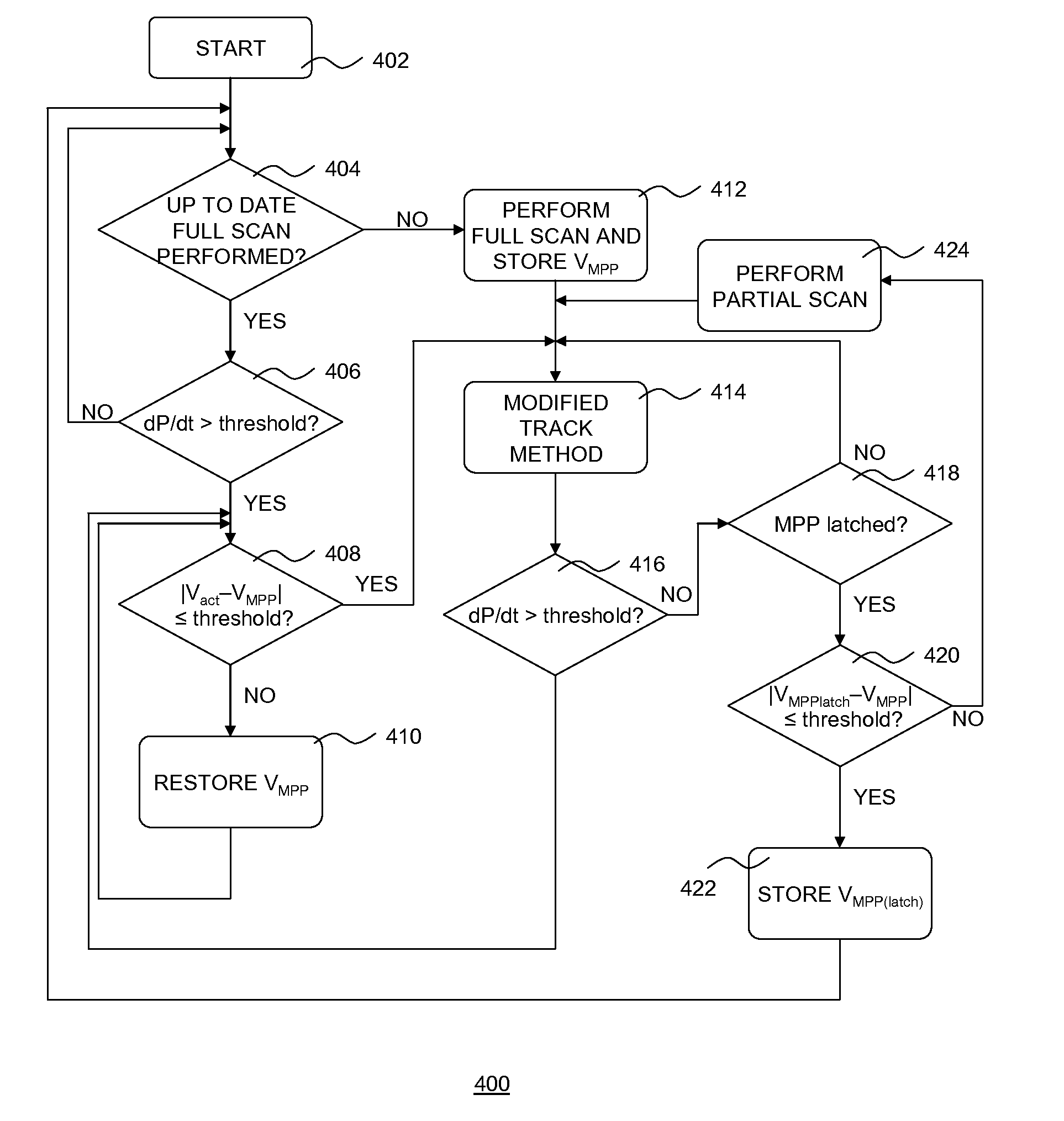Maximum power point tracking method, photovoltaic system controler and photovoltaic system
- Summary
- Abstract
- Description
- Claims
- Application Information
AI Technical Summary
Benefits of technology
Problems solved by technology
Method used
Image
Examples
Embodiment Construction
[0034]Embodiments of the invention are described in more detail and by way of non-limiting examples with reference to the accompanying drawings, wherein
[0035]FIG. 1 depicts an IV curve of a photovoltaic system having a load directly coupled to its output;
[0036]FIG. 2 schematically depicts a photovoltaic (PV) system in accordance with an embodiment of the present invention;
[0037]FIG. 3 schematically depicts an aspect of an embodiment of the MPP tracking method of the present invention;
[0038]FIG. 4 schematically depicts another aspect of an embodiment of the MPP tracking method of the present invention; and
[0039]FIG. 5 depicts a flow chart of an embodiment of the method of the present invention.
DETAILED DESCRIPTION OF THE DRAWINGS
[0040]It should be understood that the Figures are merely schematic and are not drawn to scale. It should also be understood that the same reference numerals are used throughout the Figures to indicate the same or similar parts.
[0041]FIG. 2 depicts a typical ...
PUM
 Login to View More
Login to View More Abstract
Description
Claims
Application Information
 Login to View More
Login to View More - R&D
- Intellectual Property
- Life Sciences
- Materials
- Tech Scout
- Unparalleled Data Quality
- Higher Quality Content
- 60% Fewer Hallucinations
Browse by: Latest US Patents, China's latest patents, Technical Efficacy Thesaurus, Application Domain, Technology Topic, Popular Technical Reports.
© 2025 PatSnap. All rights reserved.Legal|Privacy policy|Modern Slavery Act Transparency Statement|Sitemap|About US| Contact US: help@patsnap.com



